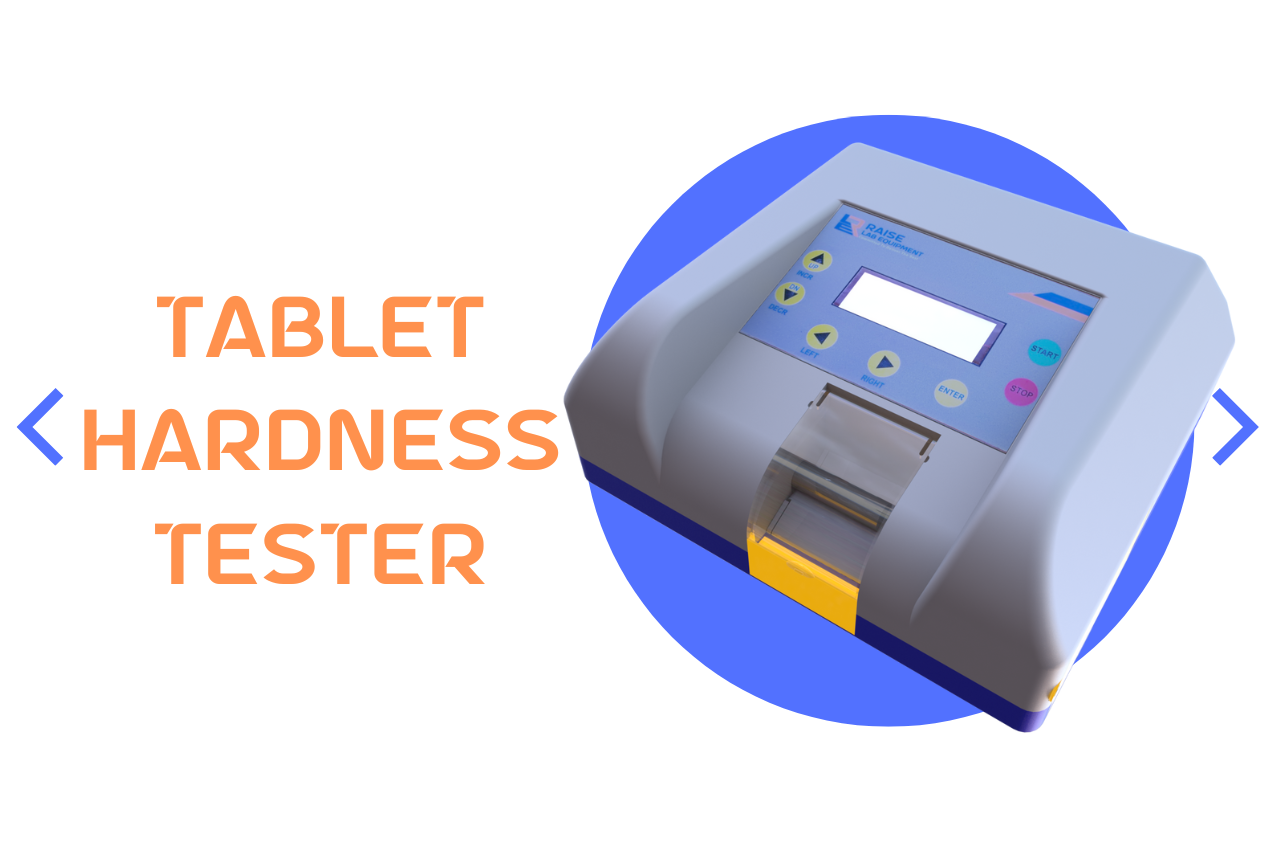Tablet hardness testing, often called tablet testers or hardness meters, are a crucial element in the quality assurance process in pharmaceutical manufacturing. This thorough guide explains the primary parameters, types of testing equipment, measuring units and working principles, troubleshooting, maintenance, and quality standards for tablets for testing their hardness.
Why Test Tablet Hardness?
Understanding the hardness of tablets is vital for a variety of reasons. It helps to determine the tablet’s degradation and ensures the correct dosage, avoiding excessive adhesion or premature dissolution. In addition, the test for tablet hardness determines the tablet’s capacity to withstand the pressure of manufacturing coating, packaging, and transport. It also offers insights into the components of the materials, aiding in the improvement of formulations and production processes.
Tablet Testing Units of Measurement
The hardness of tablets is measured using common units, such as kg (kg), Newton (N) and, pounds (lb), and Kilopond (Kp). A Strong-Cobb (SC) can be described as an informal measurement of force that was once accepted as the standard for the world. Knowing these units is crucial to ensure accurate and standard tablet hardness tests.
Main Parts of Tablet Hardness Tester Machine
A typical tablet tester consists of an assembly for testing and frame assembly. The tester assembly comprises the motor load unit and an indentor. Meanwhile, the frame assembly comprises a vertically oriented, horizontally oriented plate that forms an arc-shaped. The slim design, digital display, and user-friendly interface make tablets with high-quality hardness testers simple.
Working Principle of Tablet Hardness Tester
Tablet testers work by applying force to break the tablet. The principle of operation is to compress it between two metal plates. The first is connected to a load cell, and the other to an electric motor. The motorized jaw is moved forward, compressing the tablet till it is broken, and the force that causes breaking is measured. The most common testing methods are crushing tests, fracture tests, and testing for bending.
Troubleshooting and Maintenance
Regular calibration, maintenance of jaws to remove tablet fragments, and replacement of batteries for thickness meters are vital maintenance methods. The calibration process ensures accuracy while cleaning ensures accuracy due to the removal of particles, and the replacement of batteries assures continuous functionality. The correct replacement of the fuse and printer settings are other elements of maintenance that ensure the reliable and accurate testing of the tablet’s hardness.
Quality Standards for Tablet Hardness Testing
Tablet testers are required to meet high-quality standards, like the ones outlined in USP chapter 1217>. These standards focus on the parallelism of plates and the consistency of load, unit resolution, and calibration. Compliance with these standards assures the accuracy and reliability of test results.
What are the benefits of tablet hardness?
Here are the significant advantages associated with achieving the right tablet hardness.
1. Enhanced Drug Stability and Shelf Life:
Optimal tablet hardness contributes to the stability of pharmaceutical formulations. Tablets with the correct hardness are less prone to physical damage, such as chipping or breaking, during handling, transportation, and storage. This resilience ensures that the tablet’s structural integrity is maintained, preserving the drug’s stability and extending the product’s shelf life.
2. Improved Patient Compliance:
Tablet hardness is crucial to the patient’s experience and compliance with prescribed medication. Tables that are too soft may crumble or disintegrate easily, leading to difficulties in administration. On the other hand, excessively hard tablets may pose challenges for patients, especially those with swallowing difficulties. Achieving the right balance of hardness ensures that tablets are easy to handle and swallow, contributing to better patient compliance.
3. Precise Drug Release and Bioavailability:
The hardness of a tablet is closely linked to its disintegration and dissolution characteristics. Tablets with appropriate hardness levels disintegrate in a controlled manner, releasing the drug at the desired rate. This controlled release pattern enhances bioavailability by allowing the drug to be absorbed optimally in the gastrointestinal tract. Consistent tablet hardness is essential for achieving predictable and reproducible drug release profiles.
4. Facilitates Coating and Printing Processes:
In pharmaceutical manufacturing, tablets often undergo coating processes for various reasons, including taste masking, delayed-release, or improved appearance. Tablets with the right hardness provide a stable foundation for coating materials, ensuring uniform and efficient coating application. Additionally, tablets with consistent hardness levels facilitate printing processes for product identification, dosage strength, and other essential information.
5. Optimized Manufacturing Processes:
Maintaining appropriate tablet hardness is beneficial for the overall efficiency of pharmaceutical manufacturing processes. Tablets with consistent hardness levels can withstand the mechanical stresses exerted during compression, handling, and packaging stages. This resilience reduces the likelihood of tablet breakage or deformation during production, minimizing production losses and improving manufacturing yield.
6. Cost Savings:
Achieving the desired tablet hardness contributes to cost savings in pharmaceutical manufacturing. Consistent tablet hardness reduces the need for rework or rejection of batches due to hardness-related issues. It also minimizes the risk of tablet breakage during packaging, reducing waste and ensuring that a higher percentage of manufactured tablets reach the market.
Conclusion
Testing for tablet hardness is an essential component of the pharmaceutical manufacturing process that contributes to quality assurance and ensures tablets’ effectiveness for medicinal use. Knowing the parameters, kinds of testing equipment, measurement units, and working principles, as well as troubleshooting, maintenance, and high-quality standards, are crucial to ensuring that tablets are accurate and consistent in their tests for hardness.


